
OR
What ails heritage reconstruction?
Published On: August 21, 2019 01:05 AM NPT By: Keshab Sharma/Apil KC
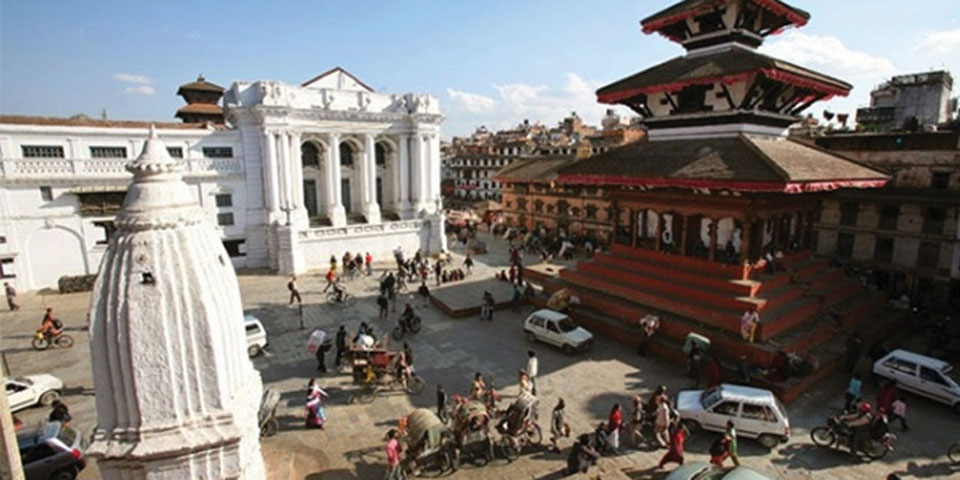
More from Author
Local authorities have not really understood true spirit of heritage reconstruction. Decisions are being changed quite often
The 2015 great earthquakes had a major impact on cultural heritage. Hundreds of monuments, including palaces, temples, monasteries, chaityas, bahals, sattals and patis collapsed and many were badly damaged. According to the preliminary report of Department of Archaeology (DOA), the earthquake had affected as many as 745 monuments in 20 districts. UNESCO world heritage sites—three Durbar Squares of Kathmandu, Patan and Bhaktapur, Swayambhunath, Boudhanath, Pashupatinath and Changu Narayan—also suffered damage.
These structures built in ancient time are of great historic and archaeological importance. Most of heritage structures in Nepal have brick masonry as the principal load-bearing structural system. Many studies of the past earthquakes show that brick and stone masonry structures have suffered the maximum damage in moderate to severe ground shakings. This is because of their age and heavy weight, structural deficiency, age and maintenance level, material quality and large amplification of short period waves in the earthquake motions. Besides, masonry has very low tensile and shear strength and fails in a brittle manner.
The reconstruction of heritage sites has been mired in delays. Four years after devastating earthquakes, people are questioning why many of heritage sites are still under reconstruction. Each individual heritage reconstruction is challenging. No governing body was prepared for such quality and quantity of reconstruction work. It was nearly impossible for DOA to carry out the entire process though it’s been working as the major custodian and implementing agency of the government. The major authority and responsibility of the department include investigating the damages, planning the reconstruction process, managing the resources and implementing and monitoring the reconstruction process.
Lack of coordination among different stakeholders has also delayed the process. Though DOA has forwarded a positive approach in coordination with NRA, there are still technical, bureaucratic and practical hassles in the reconstruction process. Some of the major issues are highlighted below.
Major hurdles
Inconvenient access to local materials and technology has been one of the major challenges in the reconstruction process. Most important materials in Nepali traditional architecture are sal wood, and surkhi mortar, which are rarely available today. Carpenters, sculpture artists, skilled masons, and other skilled manpower are also scarcely available for this scale of reconstruction with mud, mortar and wood. Unavailability of the technical manpower has also added to the challenge.
In response to these issues, some experts also take the scenario as the right time to replace traditional techniques with modern technology citing safety and ease of reconstruction. But integration of modern materials and elements in the historic edifices leads to loss of former authenticity.
One of the issues in reconstruction of heritage structures in Kathmandu Valley has been its unresponsive character toward community participation and social inclusiveness. Local government is being criticized for being responsive more to donor agencies and inter-governmental agencies than to the locals. After the delayed reconstruction process and mistrust in the implementation agencies, the local community came together to self-organize and create locally based structures, focusing on their community heritages.
Two years after the earthquake, local community around the vicinity of Kasthmandap gathered to lead the ‘Campaign to Rebuild Kasthamandap’ after which four-party agreements were signed between NRA, DoA, Kathmandu Metropolitan City (KMC) and the campaigners, handing over the reconstruction process under direct participation of the campaigners. Few days after the agreement, Mayor of KMC said that reconstruction would take place under direct supervision of KMC.
Case of Rani Pokhari is no different. People rose in protest to halt the reconstruction process which basically used concrete and steel. Such case has been observed in many other heritage reconstruction processes where communities do not trust the government-appointed contractors and have demanded greater community participation. As majority of restoration projects are becoming battlefields between stakeholders and community, some within DoA, academics and experts have called for an alternative approach to conservation.
In Kathmandu, local communities have argued that some heritage structures in Kathmandu Valley have been reconstructed by the naïve contractors and therefore the rebuilt structures have failed to maintain historic value.
Most people tend to project the heritage as an entity of modernism. In the most blatant manner, most of the reconstruction projects are treated in a manner of modern construction and reflection of market-oriented development. And there are conflicting claims. Take the case of Kathmandu.
Mayor of KMC blames the locals and heritage conservationists for delay. Heritage experts blame KMC for the unethical reconstruction process. It is interesting to observe that KMC has changed the local bylaws to make them more amiable for a capitalist perspective. The government has recently allowed the basement construction within the heritage zone and changed the permissible height of building to be 65 feet than earlier 35 feet. And there are risks associated with the water conduits within the region and vulnerability to the existing structures because of basement construction and increased traffic due to commercial activity within the region.
Local governments are responsible for restoration and reconstruction of several individual monuments with historical and social importance. Weak governance and lack of coordination among major stakeholders has been observed in this whole process of reconstruction. Similarly, local authorities have not really understood true spirit of heritage reconstruction. Decisions are being changed quite often.
Additional issues
According to recent data from DoA, permission has been granted for more than 50 reconstruction projects for heritage structures and renovation work for 42 heritages. Such structures range from large community heritage to those of global importance such as Anantapur in Swayambhu, parts of Hanumandhoka palace in Kathmandu Durbar Square, Jaisidewal and Fasidega in Bhaktapur. UNESCO expert and practicing conservationist architect Kai Weise believes that the tendering process explains the amount needed to be spent on each monument for optimum reconstruction but does not ensure the ethical reconstruction of structures of historical importance. Heritage conservationists and historians are convinced that the reconstruction of heritage structures needs to be ‘artisan-driven’ as opposed to ‘contractor-driven’ which is often established on low cost of bidding. While preparing the contract documents including the bill of quantity, engineers and architects are not completely aware of the amount of work required to uphold the intricacy required in reconstruction.
Government officials blame the existing procurement laws which limit their ground understanding of reality in workmanship and materials required in reconstruction of heritage.
In the policy document of NRA, the government has acknowledged the limitation in the procurement procedures for materials required in traditional construction methods. Insufficient supply of some important materials like hardwood timber needs to be imported, whereas traditional bricks and tiles for reconstruction require quality control and subsidies in production.
Existing procurement laws allow the contractor to take 20 million rupees contract even without basic knowledge about heritage. This results in loss of historical pieces of evidence. Procurement Act has not been able to speed up construction works, whereas shortcomings in procurement of heritage structures leave loopholes for unethical reconstruction.
The reconstruction of cultural and heritage structures must ensure that communities take the ownership and stand together in the reconstruction process. Reconstruction of the heritages is not linked just with economic and touristic calculation. It’s important to transfer knowledge and skills acquired from our history to future generation. This is why heritage reconstruction must progress with focus on authenticity in materials, design, technology and traditional craftsmanship.
Sharma holds PhD in Engineering and works in Canada as a Geoscientist. KC is an Architecture and Urban Planner
You May Like This
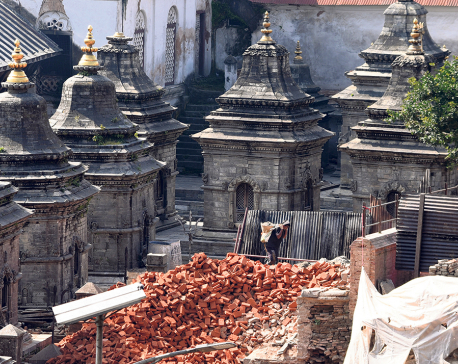
UNESCO mission expresses concern over heritage reconstruction
KATHMANDU, Oct 19: A mission of the United Nations Educational, Scientific and Cultural Organization (UNESCO) has expressed concern over the... Read More...
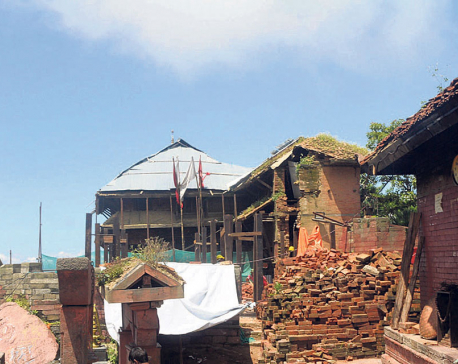
Gorkha Durbar reconstruction slow
GORKHA, Dec 12: The historic Gorkha Durbar (palace), one of the most preferred tourist destinations in Gorkha district, wears an... Read More...
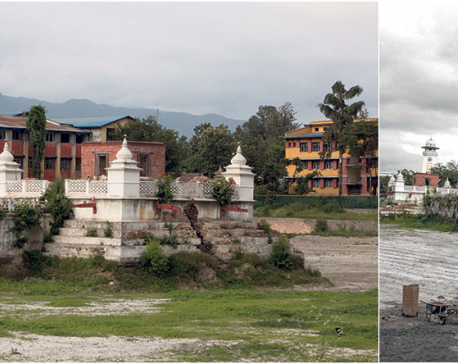
Rebuilding Ranipokhari
The rebuilding of Ranipokhari – that collapsed during the earthquake of 2015 – has brought about a number of widespread... Read More...

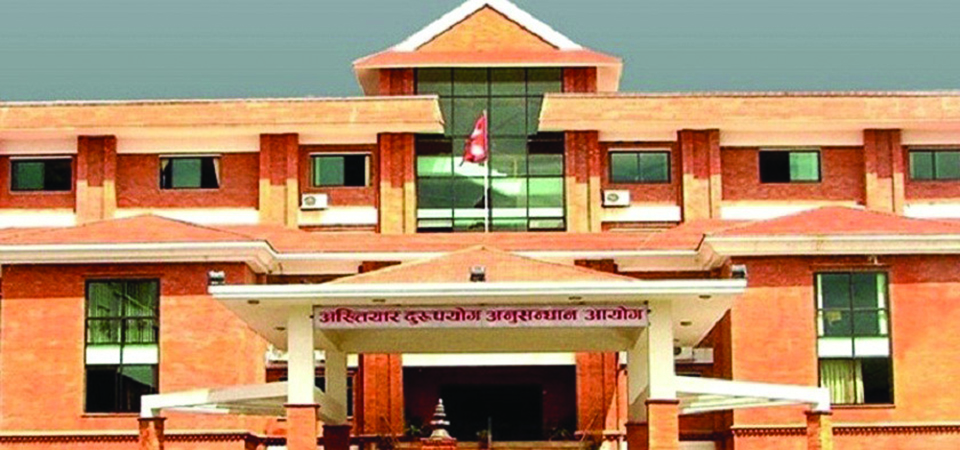

Just In
- Ambassador Adhikari presents his letter of credentials to Turkish President Erdoğan
- Bajhang by-election: Construction of Taklakot Road is common election agenda of candidates
- Meeting of Finance Committee being held today to discuss 2025/25 budget
- Stakeholders call for transparency as Beijing pushes for early implementation of BRI projects in Nepal
- Special Court orders judicial custody for Sunil Paudel over illegal wealth acquisition charges
- District Court Rautahat sentences four individuals including Aftab Alam to life imprisonment
- Class 12 exam starts today with participation of over 390,000 candidates
- Weather expected to be partially cloudy in hilly areas, clear in remaining areas











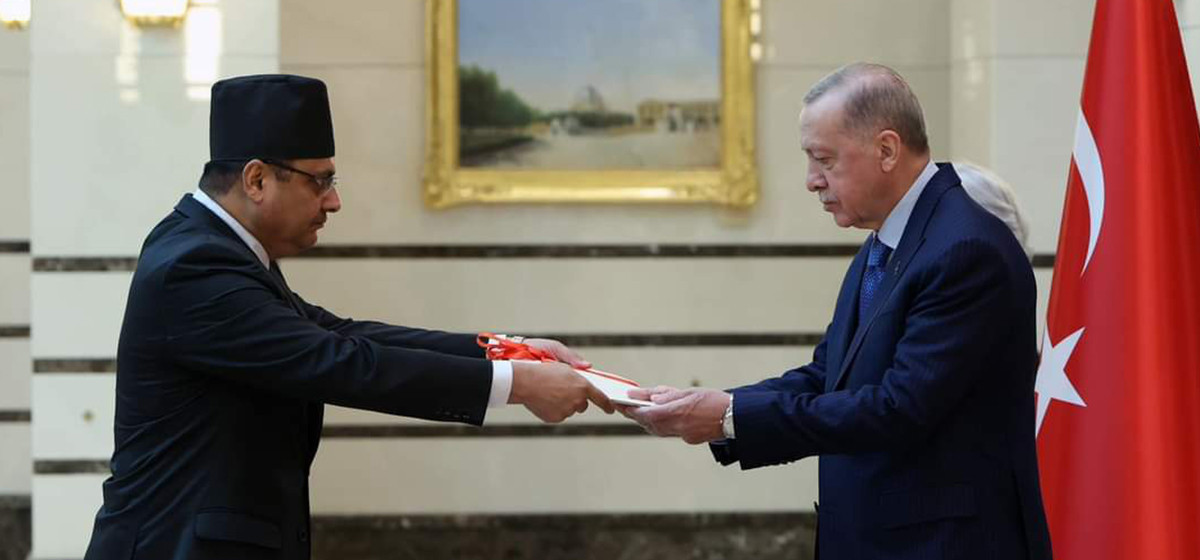
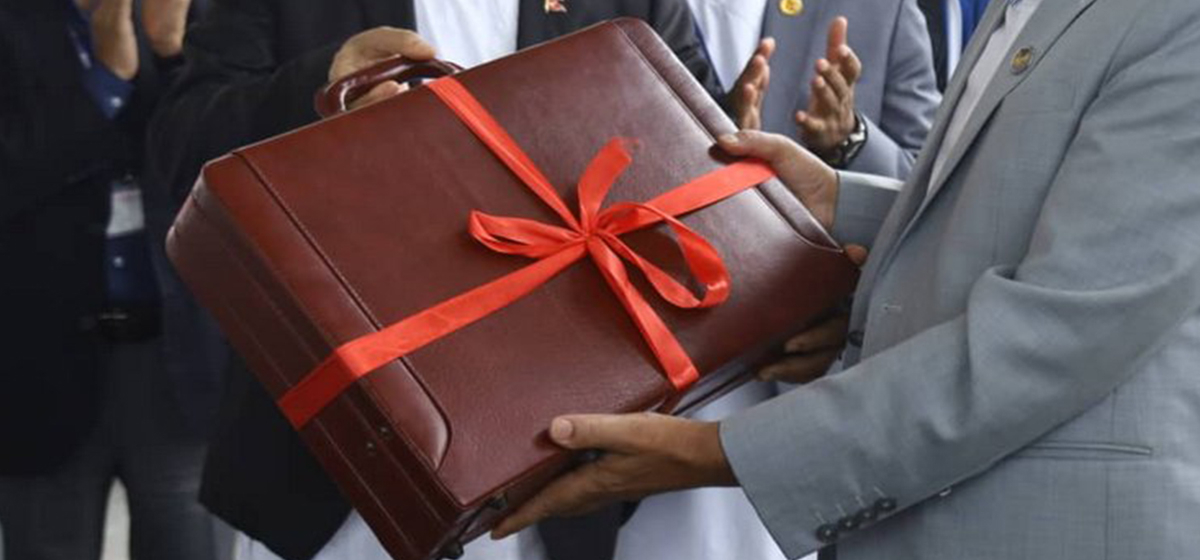



Leave A Comment